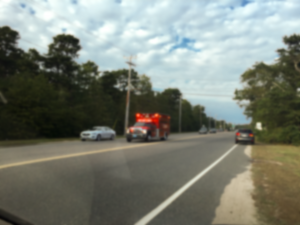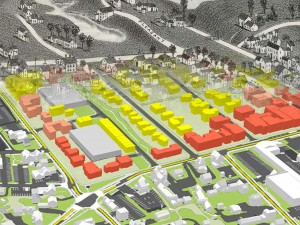Overview
This project is part of a 20-year, $100 million vision to improve access to the Village of Hyannis, the largest and most urbanized area in the Town of Barnstable and on Cape Cod, for all users.
Yarmouth Road provides direct access from Route 6 to Hyannis Center. The project area offers single lanes of travel with a narrow shoulder and no accommodations for walkers and bicyclists. It is also the preferred route for ambulances exiting Route 6 seeking access to Cape Cod Hospital, the largest emergency and health care service provider on the Cape. Due to significant traffic congestion on the corridor, many ambulances seek alternate routes which lengthens emergency response times. Traffic congestion also stifles Hyannis’ economic development as residents and visitors alike avoid the area due to long delays and the lack of alternative transportation modes.
The reconstruction of Yarmouth Road includes converting the roadway from two lanes to a four lane boulevard and the addition of a bicycle-pedestrian path connecting the Cape Cod Rail Trail to the transit hub. The project will serve the entire Cape Cod region, including both urban and rural communities that use the Yarmouth Road corridor to access the region’s largest hospital, national and regional retail stores, a vibrant downtown and harbor district, the regional airport, the Cape Cod Regional Transit Authority Transportation Center, and ferry service to Nantucket and Martha’s Vineyard islands, among other services and amenities.
Broad public support of the project has been consistently demonstrated through a series of public engagement processes and surveys.
Key Project Benefits
- Improves Emergency Medical Access: Improves access to the region's largest hospital, cutting crucial minutes off the main ambulance route to the hospital
- Reduces Freight Delays: Reduces delays to freight moving through the corridor and to Martha's Vineyard and Nantucket via ferries
- Creates New Multi-Modal Connections between the regional path network and the regional transit hub (regional bus, intercity bus, rail, air, and ferry)
- Reduces Traffic Congestion: Reduces congestion that stifles economic development and job access to an area uniquely-suited for such activities
- Improves Roadway and Pedestrian Safety in a corridor with documented safety issues
- Improves Road Conditions: Improves the state of good repair by replacing a portion of roadway that is well beyond its service life
- Economic Improvement: Improves economic competitiveness and movement of goods in a key freight corridor and critical economic opportunity
- Enhances Quality of Life by addressing high priority needs for pedestrians and bicycles (located near identified concentration of individuals with limited access to personal automobiles)
- Enhances the Environment: Promotes environmental sustainability by reducing carbon emissions and reduces the potential for pollutants to impact public water supply wells
Contact
-
Steven Tupperstupper@capecodcommission.org




